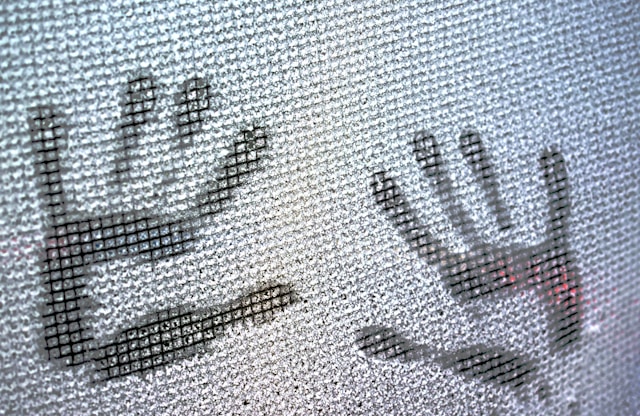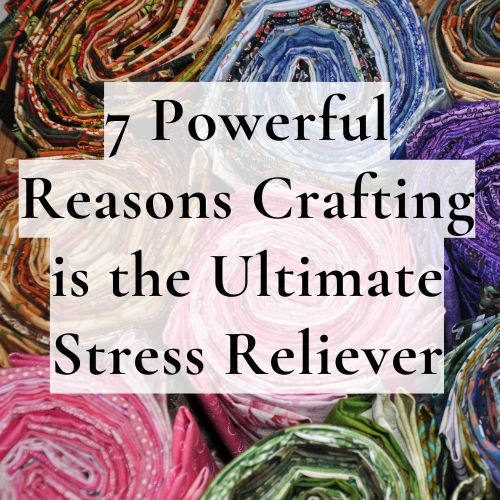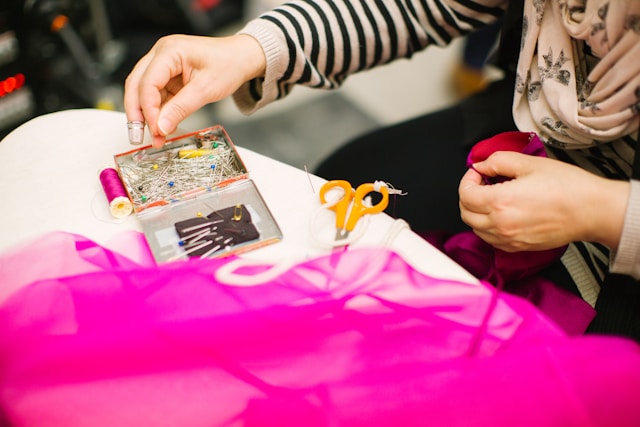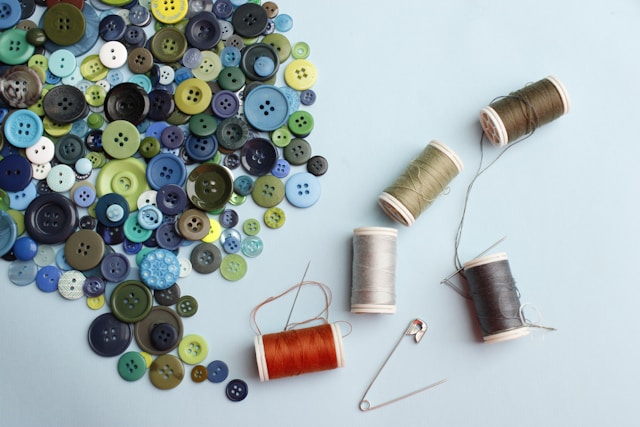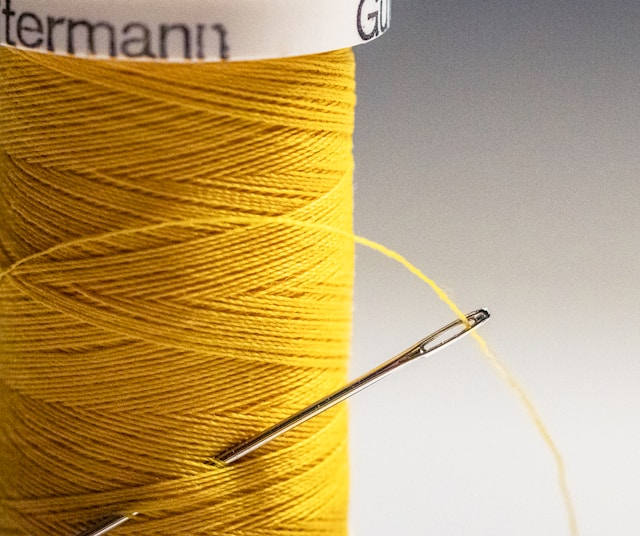Crafting has long been a source of comfort, self-expression, and emotional release—but its impact goes far beyond a simple hobby. Fiber arts have been used in art therapy programs to help individuals cope with PTSD, grief, and emotional trauma, providing a safe, tactile way to process difficult emotions.
Knitting, weaving, embroidery, and quilting offer a non-verbal outlet for expression, helping people work through complex feelings in a way that words often can’t. Research shows that engaging in fiber arts can improve emotional regulation, reduce stress, and provide a sense of control in uncertain times—making them a valuable tool for emotional healing.
Let’s explore how textile crafts offer a unique pathway to processing trauma, grief, and emotional challenges, and how you can use fiber arts to support your own healing journey.
📌 Click here to learn more about the Craft to Heal Workshop Series.
The Science: Why Fiber Arts Help Process Trauma and Grief
When we experience trauma or grief, the brain and body often store emotions in ways we don’t consciously recognize. Feelings of sadness, fear, or anxiety may show up as muscle tension, restlessness, trouble focusing, or a sense of emotional numbness.
Fiber arts provide a non-verbal, sensory-based way to work through these emotions, helping to release what is held in the body and mind.
How Textile Crafts Support Emotional Healing
✔ Knitting and weaving improve emotional regulation – The rhythmic, repetitive movements help calm the nervous system, making it easier to process emotions without becoming overwhelmed.
✔ Creative expression helps externalize emotions – Rather than keeping feelings locked inside, fiber arts allow people to express what they’re going through in a visible, tangible form.
✔ Crafting provides a sense of control – Trauma can make people feel powerless. Choosing colors, patterns, and stitches offers a structured, manageable way to reclaim agency.
✔ Tactile engagement grounds the nervous system – The act of touching soft yarn, threading a needle, or guiding fabric through a sewing machine helps bring awareness back into the present moment, counteracting emotional distress.
Studies have shown that craft-based therapies help reduce PTSD symptoms, improve focus, and provide a safe space for self-reflection. This is why many mental health professionals integrate fiber arts into art therapy programs for survivors of trauma and loss.
Knitting and Weaving as Tools for Emotional Regulation
1. The Rhythm of Repetitive Motion Soothes the Nervous System
Knitting and weaving both engage the body in slow, rhythmic movement, which has been shown to reduce stress and regulate emotions.
- The back-and-forth motion of weaving or looping stitches in knitting helps synchronize breathing and shift the nervous system into a state of calm.
- This type of bilateral movement (using both hands in a repetitive, coordinated way) has been used in trauma therapy to help reprocess difficult memories in a less overwhelming way.
- Many people find that knitting or weaving while reflecting on difficult emotions allows them to process those feelings more gently, without becoming consumed by them.
2. Working with Fabric and Thread Helps Release Stored Emotion
Emotions are often stored in the body as much as in the mind. Fiber arts provide a way to “stitch out” emotional painin a physical, external way.
- The act of pulling thread through fabric, tying knots, or layering textiles can symbolize healing and reconstruction.
- Some people use fabric from significant moments in their life—such as clothing from a lost loved one—to create memory quilts or woven wall hangings as a form of remembrance and healing.
- Even choosing colors, textures, and patterns can help externalize what words cannot fully express.
For many, fiber arts serve as a bridge between internal experience and external expression, helping to move emotions from the subconscious into something tangible and transformative.
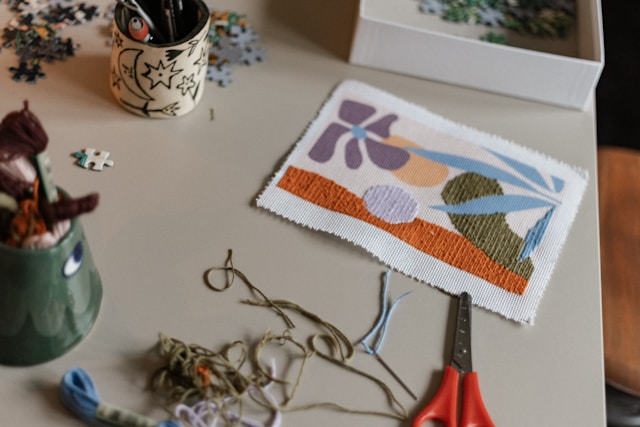
Textile Crafts as a Safe Outlet for Processing Difficult Feelings
One of the reasons fiber arts are so powerful for healing is that they offer a safe, contained space to process emotions.Unlike talking therapy, which requires putting feelings into words, fiber arts allow people to express themselves in a less direct but deeply meaningful way.
Why Textile Crafts Provide a Safe Emotional Outlet
✔ Non-verbal expression – For those who find it difficult to talk about trauma, stitching or weaving offers a way to “speak” through their hands.
✔ A contained, structured process – Unlike overwhelming emotions, crafts have a beginning, middle, and end, providing a sense of order and completion.
✔ Opportunity for transformation – Taking raw materials and turning them into something beautiful or functional mirrors the emotional healing process.
For many people, the simple act of threading a needle, making a stitch, or knotting yarn provides a sense of grounding and relief, even in the most difficult emotional moments.
How to Use Fiber Arts for Emotional Healing
If you want to explore fiber arts as a tool for emotional processing, here are a few ways to begin:
1. Start a “Feeling Stitch” Practice
✔ Choose a color of thread or yarn that represents your current emotions (warm colors for intensity, cool colors for calm, dark for grief, bright for hope).
✔ Begin stitching or weaving without a set plan—let the process unfold naturally.
✔ Notice how the act of crafting shifts your emotional state—does the tension ease? Does the repetitive motion bring comfort?
2. Create a Memory Quilt or Woven Keepsake
✔ Gather fabric from significant moments—clothing from loved ones, scraps from past projects, or colors that hold meaning.
✔ Sew or weave these pieces together into a quilt, wall hanging, or textile journal.
✔ Use the process as a way to reflect, remember, and honor your journey.
3. Engage in Group Crafting for Connection and Support
✔ Join a knitting or quilting group—creative communities offer both comfort and shared healing.
✔ Work on collaborative projects, such as stitching blankets for charity or creating a quilt for a friend.
✔ Use crafting time as a mindful, shared ritual—a space to connect, grieve, and heal with others.
Next Steps: Using Fiber Arts as a Healing Practice
✔ Try incorporating fiber arts into your emotional self-care routine—even simple stitches can provide relief.
✔ Pay attention to what feels comforting or meaningful in your craft. Are there textures, colors, or patterns that feel especially healing?
✔ Give yourself permission to create without pressure—this isn’t about perfection, but about using your hands to process and express.
If you’re interested in exploring the deeper emotional and therapeutic benefits of crafting, the Craft to Heal workshop series offers guidance on how fiber arts can support emotional well-being, mindfulness, and self-expression.
📌 Click here to learn more about the Craft to Heal Workshop Series.
